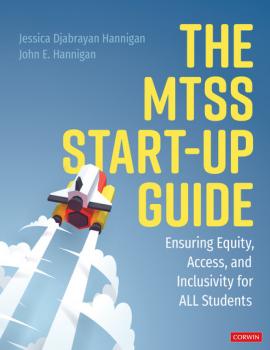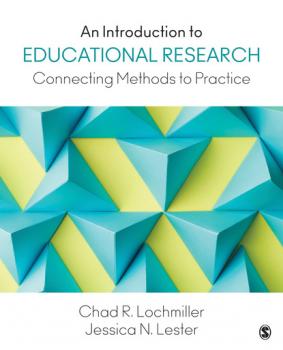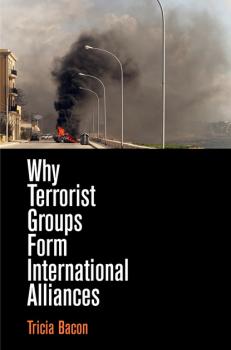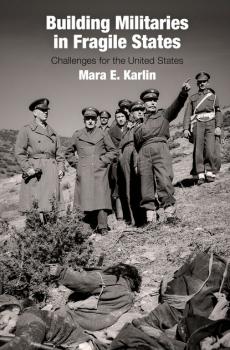ТОП просматриваемых книг сайта:
Прочая образовательная литература
Различные книги в жанре Прочая образовательная литература, доступные для чтения и скачиванияАннотация
Launch MTSS—and your students—into success MTSS is complex. Without correct implementation and evaluation, schools struggle to do it well and students can be negatively impacted in the process. With the guidance provided in this book, however, you can start on the path to equitable access and opportunities for all students to achieve. In this hands-on guide, authors Jessica and John Hannigan, nationally recognized MTSS experts, have laid out a clear, ten-step action plan for implementing a truly effective MTSS framework at your school. You’ll understand the why, what , and how of MTSS, as well as how to audit and align your current practices, structures, and interventions in order to support all students. This guide provides: Directions for conducting an objective audit of your existing MTSS 10 essential indicators of MTSS implementation Practitioner tools and tips for initiating MTSS Instructions for using elements of continuous school improvement to ensure that what you are doing is working With full-sized templates, tools for implementation, and reflection prompts throughout, The MTSS Start-Up Guide is designed to help you launch MTSS—and your students—into success.
Информация о книге
Автор произведения Jessica Djabrayan Hannigan
Аннотация
There is an inherent connection between the Christian faith and special education. For example, both focus on the worth of the individual. Both also focus on fairness and on caring for, or helping, the weak. Similarly, both aim to equip and support others. This book helps the readers perceive this integral relationship that exists between the Christian faith and the special education discipline. This book utilizes the chapters that stem from real life professional experiences and scholarship of the contributors to model and encourage special education practice from a Christian faith angle. It is our view that special education practiced from this faith perspective will transform what is currently accepted as best practice, into a new system of special education experience that is wholesome, biblically-based, and characteristic of Shalom as wholeness (not just peace). Shalom in this sense has strong relevance in both the Christian faith and special education. The first three chapters highlight the connection between special education and Christian theology, and draw attention to the pivotal role worldview plays in being an effective special educator. The bulk of the body of the text looks at different aspects of instructional effectiveness in special education from a Christian faith perspective.
Аннотация
Interpreting an ancient book like the Bible can be an intimidating task. Hopefully, this book will demystify or make less complicated the task of Biblical interpretation for the layperson (or seminarian) by the use of a handy and memorable acronym 'SCAR'–where S means sitting with the text to listen to the Biblical author's words over and over again; where C means the literary and cultural-historical contexts; where A means analysis; and finally, where R means God's Redemptive Remedy. Readers are treated to some accessible theory behind Biblical interpretation in Part 1 and examples in Part 2, where SCAR is applied directly to two Old Testament and two New Testament texts.
God has revealed himself on the pages of Scripture. He has revealed himself because he wants to be jealously and desperately known; so, my prayer for you is that this small book along with the True Biblical Interpreter, the Holy Spirit, will greatly and patiently escort you in this endeavor so that you fall more in love with our beautiful and gracious God who knows and loves you intimately. And may your growing and maturing love for him manifest itself in your unwavering obedience to him.
God has revealed himself on the pages of Scripture. He has revealed himself because he wants to be jealously and desperately known; so, my prayer for you is that this small book along with the True Biblical Interpreter, the Holy Spirit, will greatly and patiently escort you in this endeavor so that you fall more in love with our beautiful and gracious God who knows and loves you intimately. And may your growing and maturing love for him manifest itself in your unwavering obedience to him.
Аннотация
In this fully updated fifth edition of this much-loved textbook, students will be introduced to different ways of looking at education, supported by links to classic and contemporary research. Built around the essential themes of psychology, history, policy and sociology that underpin Education Studies courses, key updates include: · New ‘Applying Critical Evaluation’ tasks to help develop your analytical skills · Analysis of recent curriculum developments including EY assessment, Ebacc and T-levels · Examination of education policy up to, and including, 2019 · Enhanced discussion of educational neuroscience and the science of learning
Аннотация
Written specifically for education practitioners, An Introduction to Educational Research: Connecting Methods to Practice approaches research methods from a practice-first perspective that aligns research with professional experiences and identifies the tools and resources readers can use when conducting their own research. Throughout the book, authors Chad R. Lochmiller and Jessica N. Lester illuminate complex research concepts using problems of practice confronting educators to help readers make meaningful connections with key concepts and research practices. The authors present balanced coverage across research methodologies that is linked to practice, so readers clearly see research as a tool they can use to improve classrooms, schools, districts, and educational organizations.
Аннотация
Modern Classroom Assessment offers an applied, student-centered guide to the major research-based approaches to assessment in today’s modern classroom. Rather than simply list basic assessment formats with a few examples, as many textbooks do, award-winning professor and scholar Bruce Frey’s book fully explores all five key approaches for teacher-designed assessment— Traditional Paper-and-Pencil, Performance-Based Assessment, Formative Assessment, Universal Test Design, and Authentic Assessment —while making abstract concepts and guidelines clear with hundreds of real-world illustrations and examples of what actual teachers do. Offering a variety of engaging learning tools and realistic stories from the classroom, this text will give any reader a strong foundation for designing modern assessments in their own classrooms.
Аннотация
On July 7, 2005, at the end of the morning rush hour, three near-simultaneous explosions tore apart the London Underground. Within an hour, the entire subway network was evacuated, and a fourth explosion in a bus underscored that this was a terrorist operation. The bombings shattered the British counterterrorism services' assumptions about the global neojihadi threat to Britain. Authorities pondered whether al Qaeda was a loose coalition with no clear leadership or a highly structured group with international reach that posed a clear threat to the United Kingdom. These two perspectives are not just academic disputes but raise important issues with real consequences in terms of counterterrorism strategy. What sorts of distinct measures are needed to combat these opposing forms of terrorism? What can we learn from the ways in which the London terror attacks were planned and executed—and from Britain's response? In The London Bombings , counterterrorism expert Marc Sageman seeks to answer these questions through a new detailed account and analysis of the Underground bombings as well as three other attacks directed at Britain between 2004 and 2006. Drawing on previously unavailable trial transcripts and law enforcement records, terrorists' self-documentation, and his own government experience in counterterrorism, Sageman makes the case that «top down» and «bottom up» conceptions of terror organizations need not be incompatible and that, in part because of this binary thinking, the West has tended to overreact to the severity of the threat. He stresses the fluid, chaotic ways that terrorist events unfold: spontaneously and gradually with haphazard planning—as the perpetrators are often worldly, educated, and not particularly religious before becoming engaged in neojihadi activities. The London Bombings is a vital, persuasive account of events that have not yet been properly presented to the public and are critical to the foundation of an effective counterterrorism strategy.
Аннотация
Terrorist groups with a shared enemy or ideology have ample reason to work together, even if they are primarily pursuing different causes. Although partnering with another terrorist organization has the potential to bolster operational effectiveness, efficiency, and prestige, international alliances may expose partners to infiltration, security breaches, or additional counterterrorism attention. Alliances between such organizations, which are suspicious and secretive by nature, must also overcome significant barriers to trust—the exposure to risk must be balanced by the promise of increased lethality, resiliency, and longevity. In Why Terrorist Groups Form International Alliances , Tricia Bacon argues that although it may seem natural for terrorist groups to ally, groups actually face substantial hurdles when attempting to ally and, when alliances do form, they are not evenly distributed across pairs. Instead, she demonstrates that when terrorist groups seek allies to obtain new skills, knowledge, or capacities for resource acquisition and mobilization, only a few groups have the ability to provide needed training, safe haven, infrastructure, or cachet. Consequently, these select few emerge as preferable partners and become hubs around which other groups cluster. According to Bacon, shared enemies and common ideologies do not cause alliances to form but create affinity to bind partners and guide partner selection. Bacon examines partnerships formed by the Popular Front for the Liberation of Palestine, Al-Qaida, and Egyptian jihadist groups, among others, in a series of case studies spanning the dawn of international terrorism in the 1960s to the present. Why Terrorist Groups Form International Alliances advances our understanding of the motivations of terrorist alliances and offers insights useful to counterterrorism efforts to disrupt these dangerous relationships.
Аннотация
Combining rigorous academic scholarship with the experience of a senior Pentagon policymaker, Mara E. Karlin explores the key national security issue of our time: how to effectively build partner militaries. Given the complex and complicated global security environment, declining U.S. defense budgets, and an increasingly connected (and often unstable) world, the United States has an ever-deepening interest in strengthening fragile states. Particularly since World War II, it has often chosen to do so by strengthening partner militaries. It will continue to do so, Karlin predicts, given U.S. sensitivity to casualties, a constrained fiscal environment, the nature of modern nationalism, increasing transnational security threats, the proliferation of fragile states, and limits on U.S. public support for military interventions. However, its record of success is thin. While most analyses of these programs focus on training and equipment, Building Militaries in Fragile States argues that this approach is misguided. Instead, given the nature of a fragile state, Karlin homes in on the outsized roles played by two key actors: the U.S. military and unhelpful external actors. With a rich comparative case-study approach that spans Europe, Asia, and the Middle East, Karlin unearths provocative findings that suggest the traditional way of working with foreign militaries needs to be rethought. Benefiting from the practical eye of an experienced national security official, her results-based exploration suggests new and meaningful findings for building partner militaries in fragile states.
Аннотация
Islamist political parties and groups are on the rise throughout the Muslim world and in Muslim communities in the West. Owing largely to the threat of terrorism, political Islam is often portrayed as a monolithic movement embodying fundamentalism and theocracy, an image magnified by the rise of populism and xenophobia in the United States and Europe. Reality, however, is far more complicated. Political Islam has evolved considerably since its spectacular rise decades ago, and today it features divergent viewpoints and contributes to discrete but simultaneous developments worldwide. This is a new political Islam, more global in scope but increasingly local in action. Emmanuel Karagiannis offers a sophisticated analysis of the different manifestations of contemporary Islamism. In a context of global economic and social changes, he finds local manifestations of Islamism are becoming both more prevalent and more diverse. Many Islamists turn to activism, still more participate formally in the democratic process, and some, in far fewer numbers, advocate violence—a wide range of political persuasions and tactics that reflects real and perceived political, cultural, and identity differences. Synthesizing prodigious research and integrating insights from the globalization debate and the literature on social movements, The New Political Islam seeks to explain the processes and factors leading to distinctive fusions of «the global» and «the local» across the landscape of contemporary political Islam. Examining converts to Islam in Europe, nonviolent Islamists with global reach, Islamist parties in Turkey, Egypt, and Tunisia, and militant Shia and Sunni groups in Syria and Iraq, Karagiannis demonstrates that Islamists have embraced ideas and practices from the global marketplace and have attempted to implement them locally. He looks closely at the ways in which Islamist activists, politicians, and militants have utilized the language of human rights, democracy, and justice to gain influence and popular support and to contend for power.
Информация о книге
Автор произведения Emmanuel Karagiannis
Жанр Прочая образовательная литература
Серия Haney Foundation Series










